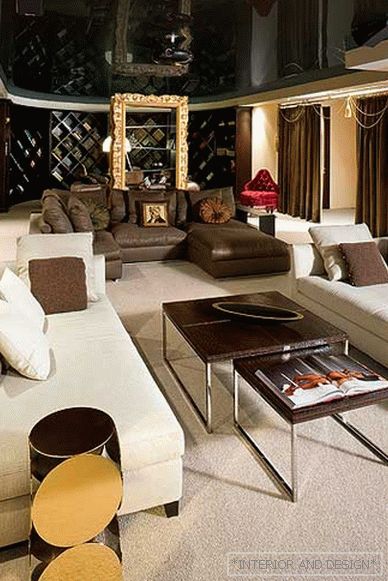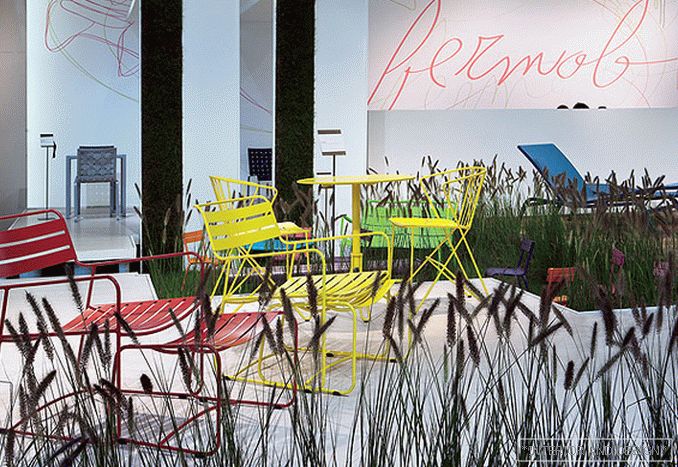Designer-experimenter, one of the first women in the world who received a professional architectural education, Cini Boeri is the pride of the Italian Republic.
Related: Achille Castiglioni - Eccentric Legend of Italian Design
In the 1950s and 1960s, along with Achille Castiglioni, Marco Zanuzo, Joe Colombo stood at the origins of Italian design. Winner of two Compasso d’Oro awards (one of them for the totality of achievements), in 2011 she received the highest award “For services to the Italian Republic”. “Thank you, but I will not wear it,” Signora Boeri snapped, taking the order from the hands of President Giorgio Napolitano. In 2014, she celebrated her 90th birthday, and in 2017, her iconic Ghost chair made of transparent glass, designed in 1987 for Fiam Italia, celebrated her anniversary.
Related: 30 Years of the Ghost Chair
Maria Cristina (better known as Cini) Boeri was born in 1924. During the war, she participated in the partisan movement (recalling the war years, tells how she sewed a parachute skirt for herself - the young partisan was then 18). She dreamed about architecture since childhood, she was dissuaded. In 1951, Boeri graduated from the Milan Polytechnic (only nine girls attended the course, while only three of them received a diploma), after which she entered as an intern at the Joe Ponti workshop. True, she worked there for three months. At that time, the designer worked closely with the porcelain manufactory Richard Ginori, and the young Boeri was impatient to take up architecture. At the invitation of Marco Zanuzo, she moved to his architectural studio, where she worked until 1963, when she founded the Cini Boeri Architetti bureau.
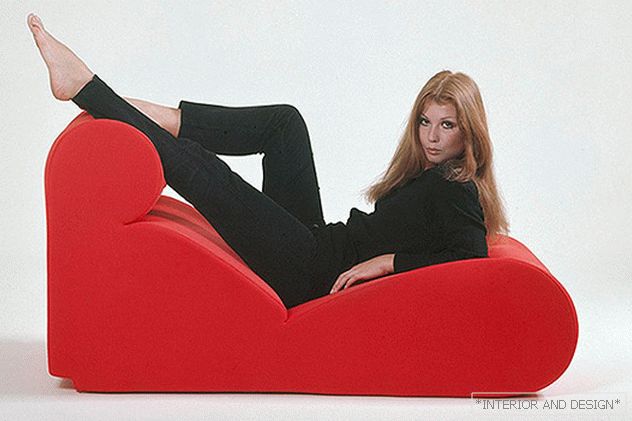 Armchair Bobo, Arflex, 1967.
Armchair Bobo, Arflex, 1967. Since the 1980s, Signora Boeri has been actively teaching: she lectures in Italy, USA, Switzerland, and Brazil. His students learn to create functional, intuitive, economical subjects. “Today, the design has turned into the creation of decor,” she reasons, while in the 50s it was a search for forms and materials corresponding to the function. Having caught the spirit of the freedom-loving 1960s, she was among the first to turn to the creation of modular, mobile, transformable furniture. Her chair on the rollers Borgogna for Poltrona Frau (1964) is the prototype of a mobile office: a flexible reading lamp and a folding table-stand are built into the armrest. The sofa Strips for Arflex (1968-72) is expanded into a bed, the outer cover with a zipper is unfastened, turning into a blanket (the model was awarded the Compasso d’Oro 1979 award). The culmination of the modular principle was the sofa Serpentone (1971): the movable design allows you to build up an infinite number of modules, stringing them on a serpentine frame.
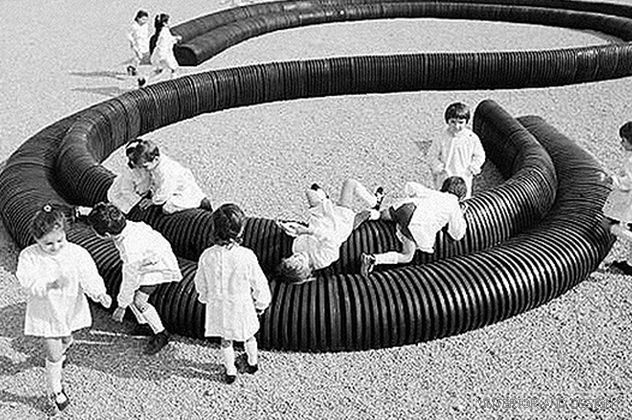 Sofa Serpentone, Arflex, 1971.
Sofa Serpentone, Arflex, 1971. 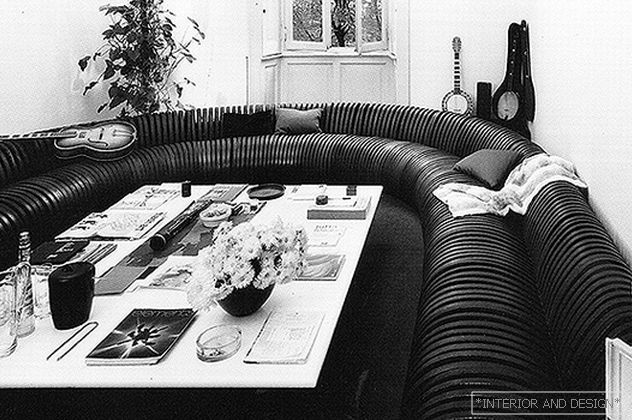 Sofa Serpentone, Arflex, 1971.
Sofa Serpentone, Arflex, 1971. 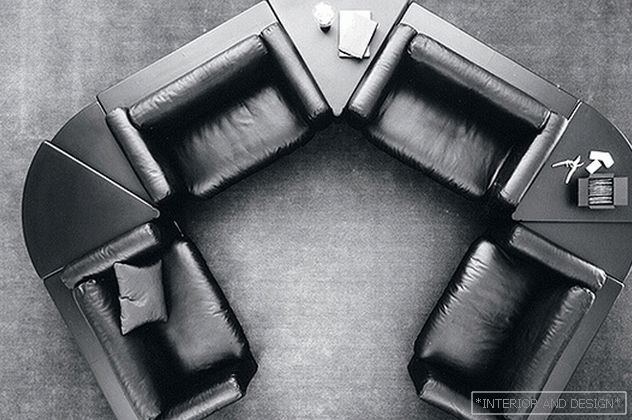 Sofa Gradual, Knoll, 1971.
Sofa Gradual, Knoll, 1971. She experimented with polyurethane, glass, plastic. In 1967, she designed the Bobo Relax lounger for Arflex, an advanced monoblock seat completely made of foamed polyurethane, and in 1987 introduced the Ghost chair (in collaboration with Tom Katayanagi for Fiam Italia) - the result of the latest technology that made it possible to produce the chair 12 mm thick solid cast glass. As Boeri admits, at that time she was terribly tired of designing sofas and armchairs, so she said to herself: “Let's make such a model that will not be visible!”.
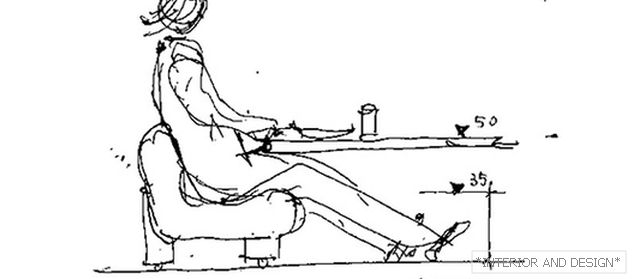 Sketch Immigration Boeri.
Sketch Immigration Boeri.  Divan Strips, Artflex, 1972.
Divan Strips, Artflex, 1972. Despite the outrageous appearance, the work of Chini Boeri is always very humane (she always prefers organic, rounded shapes to rigid geometry). It is no coincidence that there are so many private villas in its architectural heritage: Casa Rotonda (1967), Casa nel Bosco (1969), Casa Alzate (1972) ... When designing houses, she was guided by the same principles of flexibility and mobility that she implemented in the subject design. “More sliding partitions than doors; more free space and less walls ... ".
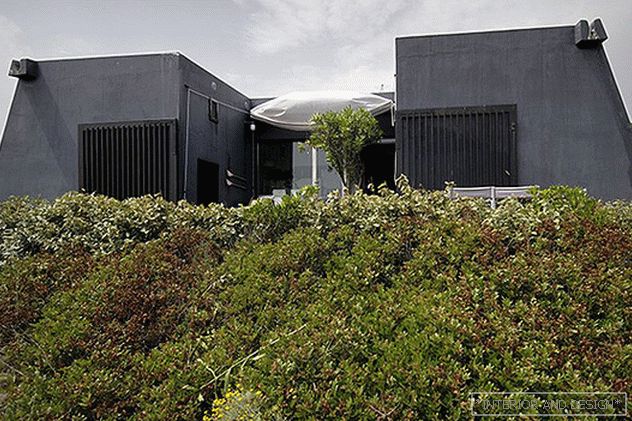 Villa Casa Bunker, 1967.
Villa Casa Bunker, 1967. 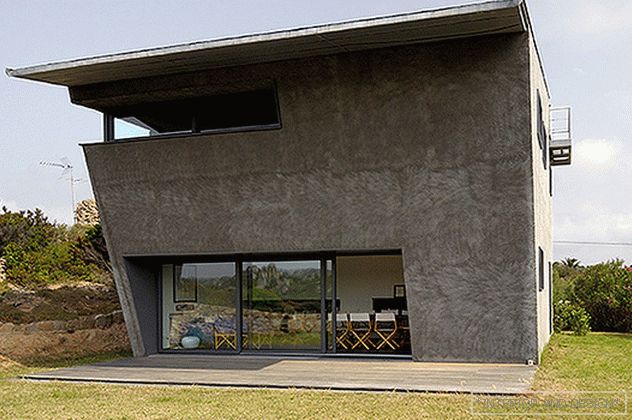 Вилла La Sbandata, 2003/2004.
Вилла La Sbandata, 2003/2004. 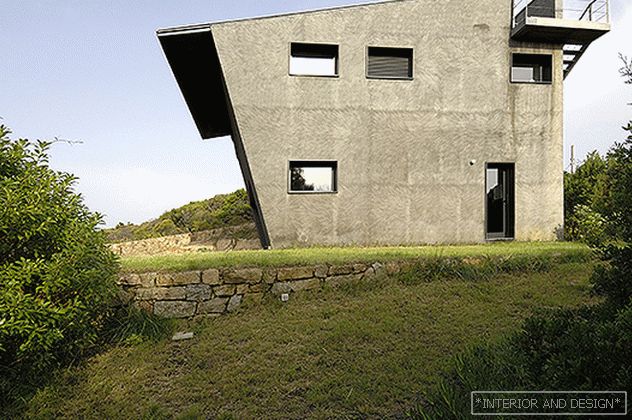 Вилла La Sbandata, 2003/2004.
Вилла La Sbandata, 2003/2004. With her program building, she calls the villa Casa Bunker on La Maddalena Island (1967). A powerful inaccessible volume seems to have grown into a rocky shore, the layout is subordinated to an innovative idea: to give every family member a maximum of freedom. The center of the villa is a common patio, around which four rooms are grouped, each with its own bathroom and separate access to the sea. Her advanced views were not clear to everyone: Bury’s spouse customers offered to include a second bedroom in the project; They were perplexed and called her "the destroyer of marriages." It seems that even today many of her plans are ahead of their time. So, in the 2010s, she took up the project of the school of the future with round classrooms, breaking the usual hierarchy of "teacher-student", and mobile furniture. The atmosphere of freedom, according to Boeri, is the most fruitful, and independent choice always means responsibility.

